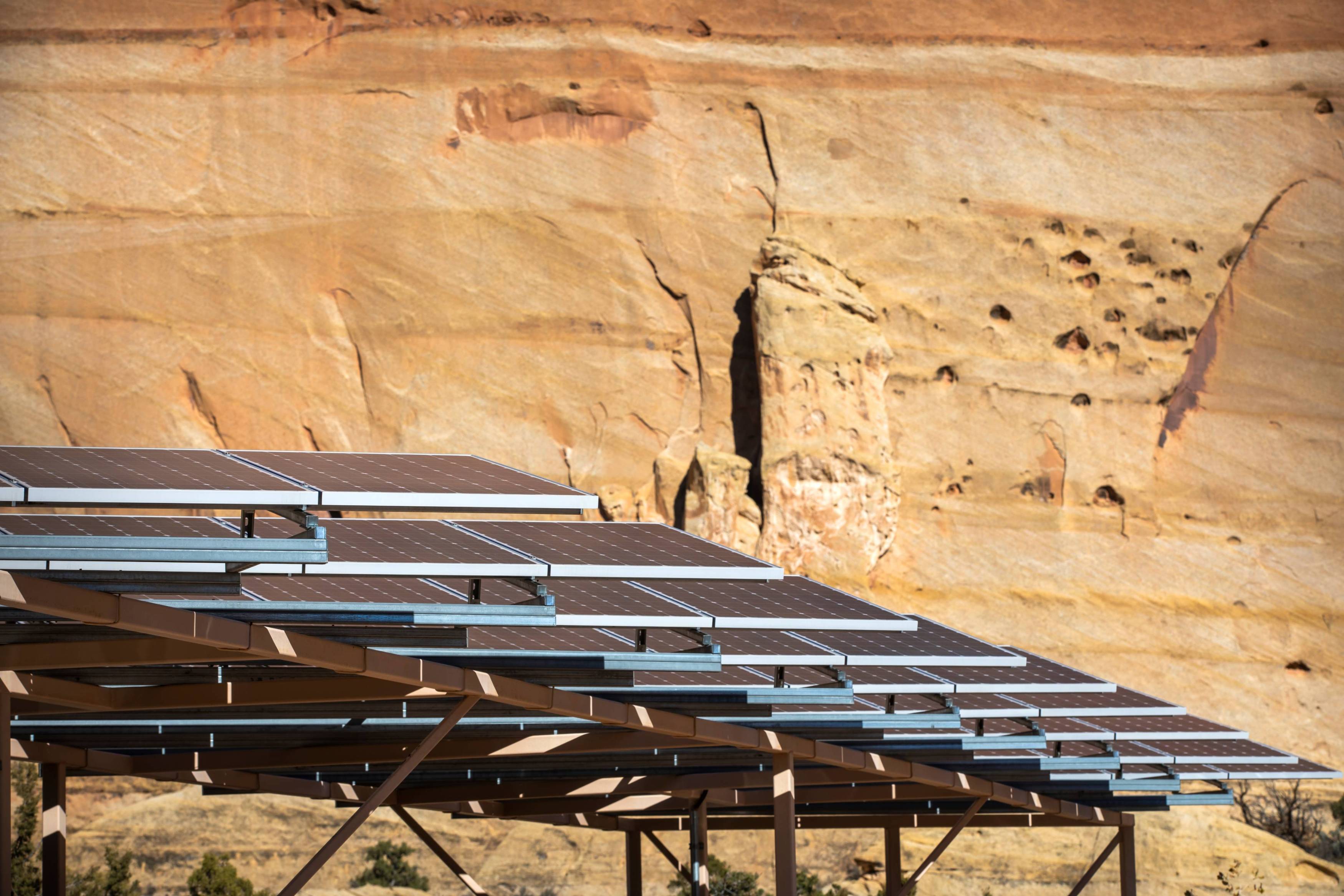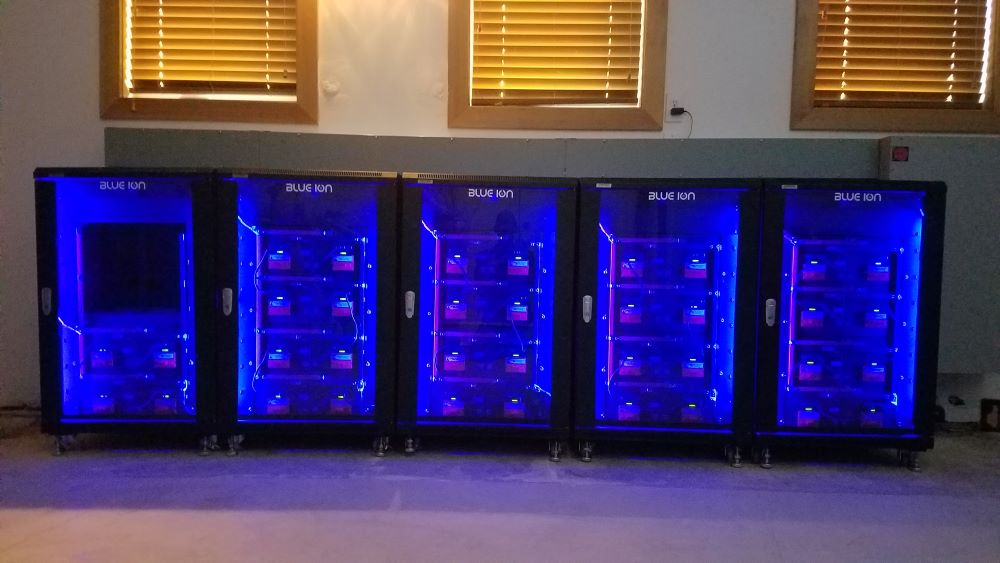Electricity at the Field Station
As an off-the-grid facility, the field station produces all of its own electricity. Though equipped with a backup propane generator, the vast majority of electricity produced at the field station comes from 72 200-watt solar panels which point south and are mounted at a fixed angle that maximizes annual energy production. The panels produce DC power, which is stored in a high-efficiency bank of lithium-ion batteries, and converted to AC power on-demand as needed. Your electronics cannot tell the difference between field station power and power from the regular grid!



